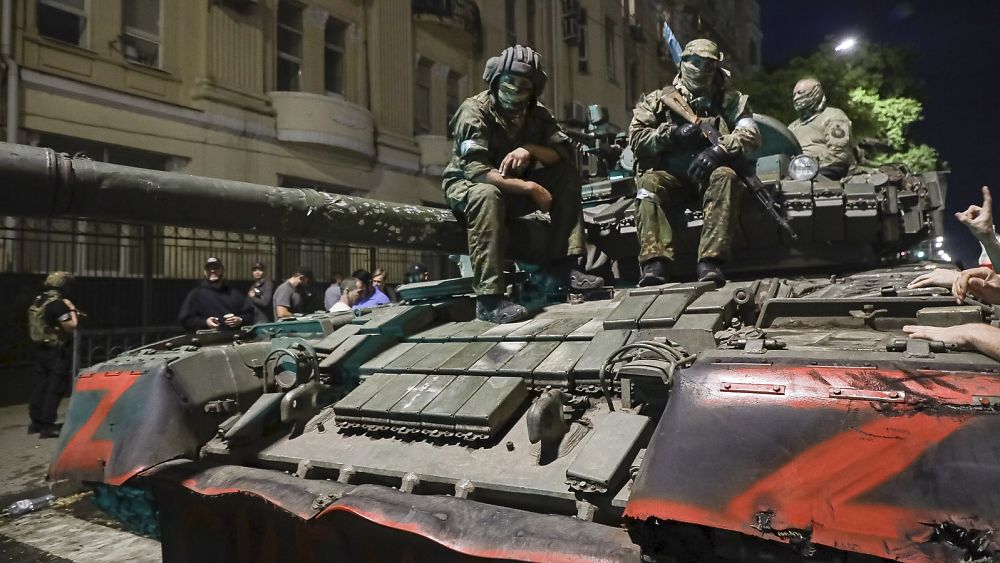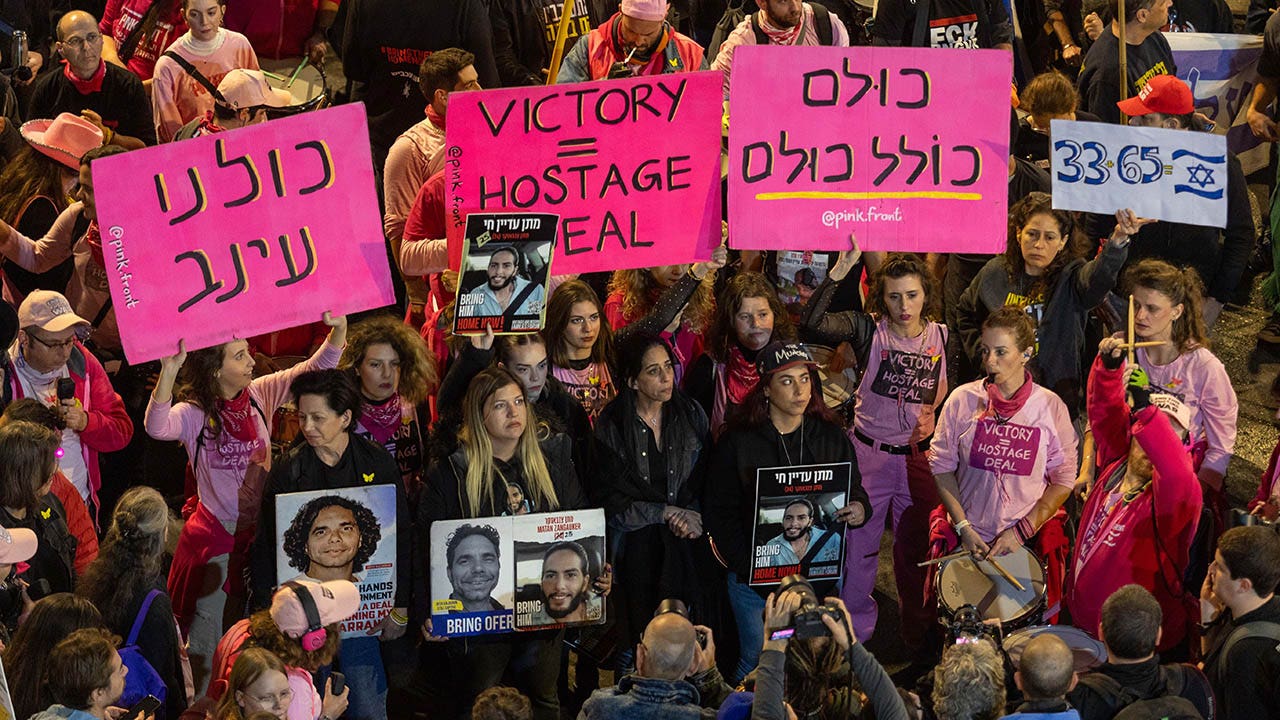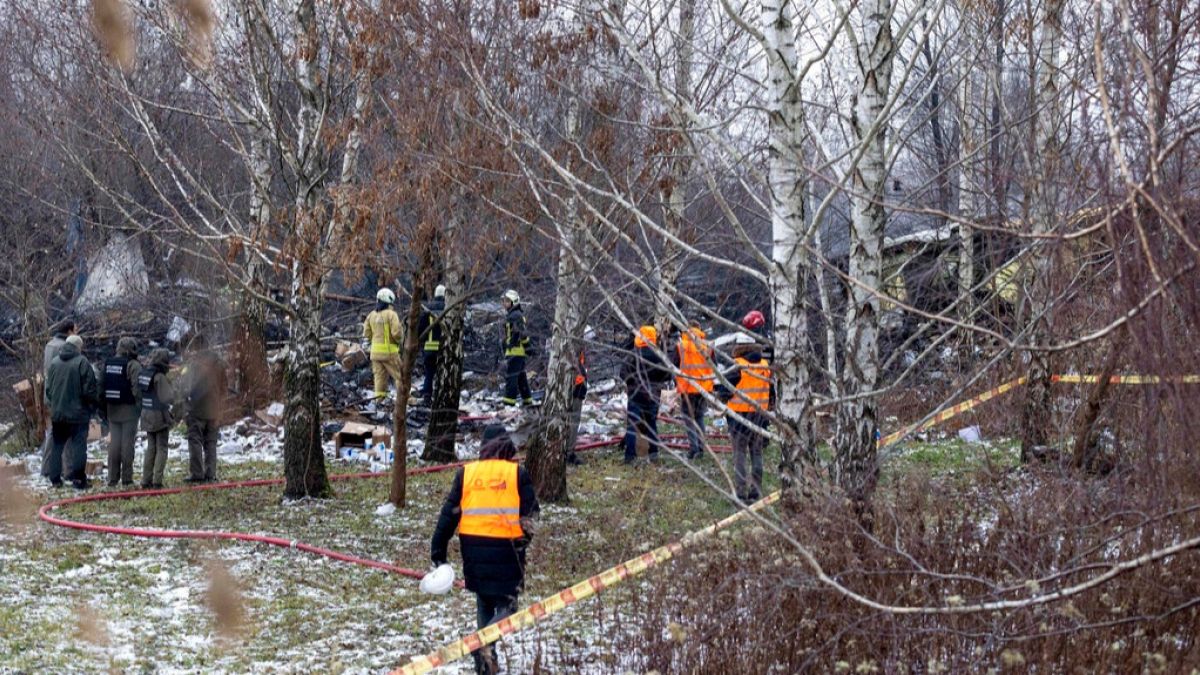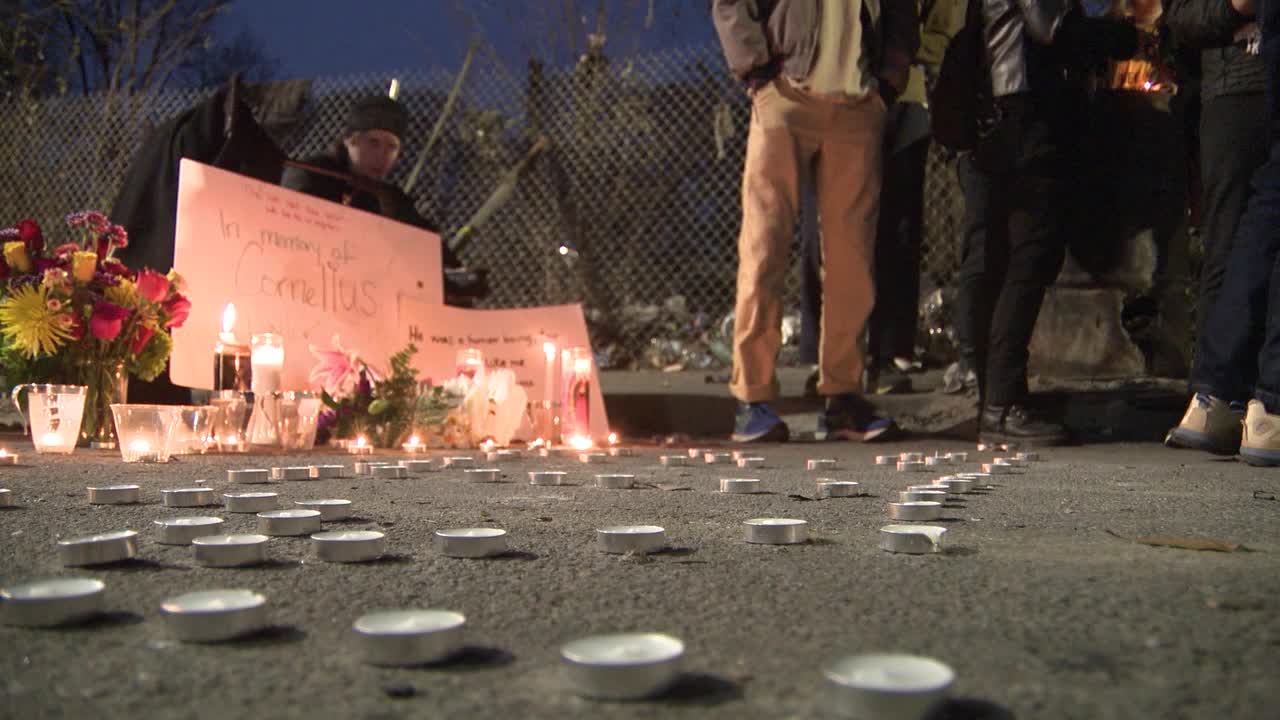World
EU states bordering Belarus express fear over Wagner ‘serial killers’

Minsk has previously been accused of weaponising its border with EU member states, while Poland has said the EU should pay to strengthen security at the border.
European Union countries bordering Belarus on Thursday asked for more solidarity from the bloc and NATO over the presence of “serial killers” from the Wagner mercenary group and the risk of “infiltration” into their countries.
“We keep a very wary eye on everything that occurs in Belarus with [Wagner chief Yevgeny] Prigozhin there and an unknown number of very trained and skilled fighters who presumably will be joining him,” Latvian Prime Minister Arturs Krišjānis Kariņš told reporters upon arrival at a two-day summit of EU leaders in Brussels.
“That does potentially pose a threat. The threat would probably not be a frontal military threat, but the threat of attempted infiltration into Europe for unknown purposes. So that means we need to heighten our border awareness and make sure that we can control that,” he added.
Minsk has previously been accused of weaponising its border with EU member states by deliberately bringing thousands of mostly Middle Eastern foreign migrants to the border in retaliation for EU sanctions against Minsk over fraudulent elections and the subsequent violent repression of pro-democracy demonstrations.
Poland, which also borders Belarus, has meanwhile said that the EU should pay to strengthen security at the border.
“European solidarity means supporting countries threatened with destabilisation,” Deputy Foreign Minister Pawel Jablonski said on Thursday on public radio.
Belarusian President Alexander Lukashenko confirmed on Tuesday that Prigozhin had indeed arrived in his country and said that a former military base had been made available for any Wagner fighters who wished to join him.
Prigozhin’s exile in Belarus is reportedly part of a deal the Wagner chief has struck with Russian President Vladimir Putin after leading a mutiny over the weekend that saw him and some of his fighters drive about 200kms south of Moscow, killing over a dozen Russian soldiers in the process.
The exile would reportedly see them avoid criminal charges, although the Russian Defence Ministry has also called on Wagner fighters to sign up with them and seized some of their military equipment.
Vilnius is also “extremely concerned about the developments in Belarus,” Gitanas Nausėda, the Lithuanian president said.
“The fighter group or these serial killers, I call them like this, they could be and emerge in Belarus at any moment. And nobody knows when they could turn against us,” he added.
He said this should spur NATO to “take bold decisions on the strengthening of (its) eastern flank.”
Leaders from the 31 members of the transatlantic military alliance will gather in the Lithuanian capital on 11-12 July to discuss the ongoing transformation of NATO and unveil new regional plans to bolster cooperation among members and defences against new threats.

World
Trump’s Return Has Unnerved World Leaders. But Not India.

Over the past year, a pair of legal bombshells have put India’s growing relationship with the United States to one of its biggest tests yet.
Just as the two sides were announcing unprecedented expansions in defense and technology ties, U.S. prosecutors accused Indian government agents of plotting to assassinate an American citizen on U.S. soil.
Months later, the Justice Department filed fraud and bribery charges against India’s most prominent business mogul, whose enterprises have soared to dizzying heights on the back of Prime Minister Narendra Modi’s power.
Still, the relationship has held. After decades of mutual suspicion between the two countries, said Eric Garcetti, the departing U.S. ambassador to India, the fact that now nothing seems to derail their ties is proof of their strength.
“I don’t think there is anything out there big enough to threaten the trajectory of the U.S.-India relations,” Mr. Garcetti said on Saturday in an interview at the embassy in New Delhi, two days before President Biden leaves office and Donald J. Trump is sworn in as his successor.
“This is incredibly resilient and almost inevitable,” Mr. Garcetti added. “It’s really the pace and the progress that’s not inevitable, like how quickly we get there.”
The Biden administration’s doubling down on the relationship with India came after nearly two decades of efforts to shed Cold War-era suspicions that had culminated with U.S. sanctions on India’s nuclear program in 1998.
Washington sees great potential in India as a geopolitical counterweight to an increasingly assertive China. Already the world’s largest democracy, India took over from China as the world’s most populous nation in 2023. India’s demographic advantages and growing technological capacity could help diversify global supply chains away from China, a priority of the United States and other major powers.
Now comes Mr. Trump’s second presidency, with its America-first orientation and threats of steep tariffs on trading partners. While leaders of many countries are unnerved, Indian officials insist that they are not among them.
S. Jaishankar, the foreign minister, has said India enjoyed “a positive political relationship with Trump” that it hopes will only deepen. As he attended the opening of a U.S. Consulate on Friday in the tech hub of Bengaluru, also known as Bangalore, Mr. Jaishankar quoted Mr. Modi as saying that the two countries were overcoming “the hesitations of history.”
Mr. Modi has enjoyed a strong rapport with Mr. Trump, an important factor because of the incoming president’s personal approach to international relations. During Mr. Trump’s first term, Mr. Modi hosted him at a grand rally in his home state of Gujarat, as well as at a large gathering in Texas of the Indian diaspora — an increasingly crucial extension of the Indian influence in American politics.
But some analysts cautioned that Mr. Trump’s unpredictability and transactional approach could pose risks for India.
Two issues in particular are bound to test the relationship, and most likely soon. During the campaign, Mr. Trump criticized India as gaining an unfair advantage in trade by maintaining high tariffs. And India could be swept up in the controversy if Mr. Trump follows through on his promise of mass deportations of illegal immigrants.
Indians make up the third-largest group of illegal immigrants in the United States, according to the Pew Research Center. If Mr. Trump sends large numbers of Indians back to their home country, it could be a major embarrassment for Mr. Modi.
Amita Batra, a New Delhi-based economist and trade expert, said that India should see warning signs in Mr. Trump’s threat of higher tariffs even against America’s traditional allies, as well as his stated willingness to unravel deals with countries like Mexico and Canada that his own first administration had put in place.
“You may say we are on great terms with Trump, we have an easy relation with the United States, but how Trump views that at a particular time is a different question altogether,” Dr. Batra said at an event at the Center for Social and Economic Progress in New Delhi. “India has to be very cautiously approaching Trump 2.0.”
During the interview, Mr. Garcetti described the bilateral relationship as “the most compelling, challenging and consequential” for both countries.
A former Democratic mayor of Los Angeles, Mr. Garcetti arrived in New Delhi in April 2023, after the mission had remained without an ambassador for two years. His confirmation process had hit a wall over accusations that he had overlooked complaints of sexual harassment by an aide when he was mayor.
He made up for the time lost with a burst of energy and outreach like that of a politician in campaign mode.
He was everywhere, from cricket grounds to cafeterias to cultural programs. Sporting a leather jacket, he even got behind the piano to open for the jazz legends Herbie Hancock and Dianne Reeves, who had come to perform at the Piano Man Jazz Club in New Delhi.
But by the time Mr. Garcetti tried his hand at dancing to a viral Bollywood tune at a Diwali celebration, relations between the two countries had hit major obstacles.
In India, right-wing trolls had seized on the U.S. allegations of Indian government involvement in a plot to assassinate an American citizen advocating a separatist cause in India. That, along with the U.S. indictment of Gautam Adani, the business mogul, was evidence that the United States was trying to dampen India’s inevitable rise, the nationalist online voices argued.
The Biden administration appeared intent on addressing the assassination episode quietly with New Delhi, demanding accountability without allowing it to become a major diplomatic sore point.
“On Capitol Hill, within the White House, I think with those in the know it was a real moment of reflection and pause,” Mr. Garcetti said of the assassination case. “It didn’t pause the momentum — you know, relations between countries are always multifaceted and simultaneous and not just between governments. But I think it was an immediate gut check.”
Mr. Garcetti said that the Biden administration had been reassured by India’s response. New Delhi had accepted the U.S. demand, he said, “not just for accountability but for systemic reform and guarantees that this will never happen again.”
An Indian government inquiry that concluded last week recommended legal action against an unnamed person with “earlier criminal links.” It said that the action “must be completed expeditiously,” in what analysts saw as an attempt to begin the Trump era with a clean slate.
“If we want to cooperate in other areas that are important to us, intelligence sharing, et cetera, trust is the basis of everything,” Mr. Garcetti said. “But I’ve been pretty blown away with how trust can deepen through a challenge.”
One question hovering over the deepening ties between the two countries is whether India can truly emerge as an alternative to China in global supply chains — something that Mr. Garcetti also wondered.
India has reaped only a small part of the windfall from the moves away from China, with businesses preferring places like Vietnam, Taiwan and Mexico, where it is easier to set up operations and where tariffs are lower.
Mr. Garcetti said India had made dramatic leaps after opening up its economy only in the 1990s, years after China. He picked up his iPhone to illustrate a widely highlighted recent success: About 15 percent of iPhone manufacturing now happens in India, a figure that could continue growing rapidly, he said.
More broadly, though, India still struggles to attract foreign investment, despite improvements in infrastructure and some streamlining of regulations. Manufacturing is not growing quickly enough to bring India the jobs it desperately needs.
“Where India’s leaving a lot of progress and jobs and growth on the table is figuring out a better way to make it seamless and frictionless to invest here for export,” Mr. Garcetti said. “Because it’s still, you know, for so many components of manufacturing, one of, if not the, highest tariffed economies.”
“They’re not wrong to look and say it used to be 95 percent worse,” Mr. Garcetti said. “But if that 5 percent is still double your competitor or 10 times your competitor — companies, you know, are like water. They flow where gravity takes them.”
World
What to expect as Israel-Hamas cease-fire goes into effect on Sunday

After the cease-fire agreement between Israel and Hamas goes into effect Sunday morning at 8:30 a.m. local time in Israel, which is 1:30 a.m. ET, three female hostages are the first expected to be released.
As of Saturday, at 8 p.m. ET, Israel was still waiting on the list of which hostages would be released first.
Israel’s Cabinet approved the deal early Saturday morning for a cease-fire in Gaza and the release of Israeli hostages captured after Hamas’ unprovoked attack on Israel on Oct. 7, 2023.
Phase One of the deal starts on Sunday with the release of the first three hostages and lasts 42 days.
ISRAEL DEFENSE FORCES WILL RECEIVE HOSTAGES SUNDAY WITH EQUIPPED CAMPER TRAILERS AND COMFORTING SUPPLIES
After the cease-fire agreement between Israel and Hamas goes into effect Sunday morning at 8:30 a.m. local time, which is 1:30 a.m. ET, three female hostages are the first expected to be released. (Maya Alleruzzo/Pool/AFP via Getty Images)
During that time, a total of 33 hostages will be released, with children, women, female soldiers, people over 50, and sick or injured men being prioritized. More than 1,000 Palestinian prisoners will be sent back to Gaza as well.
Most of the Israeli hostages are believed to still be alive, but their identities won’t be revealed until closer to when they’re released.
Another four hostages will be released on day seven and three more will be released on day 14, with a priority given to women.
Three more hostages will also be released on day 28 and again on day 35.
Between days 35 and 42, hostages Avera Mengistu and Hisham al-Sayed, who have both been held in Gaza since 2014 and 2015, will be released.
ISRAEL-HAMAS CEASE-FIRE: ISRAELI GOVERNMENT APPROVES DEAL SIGNED BY NEGOTIATORS
In the last week of phase one, 12 hostages will be released.

Hundreds of people gathered in Tel Aviv, Israel, on Saturday to demand the immediate return of hostages to their homes after the ceasefire came into effect. (Nir Keidar/Anadolu via Getty Images)
On the 16th day of Phase One, negotiations will begin for Phase Two, which is expected to include the release of all remaining Israeli hostages, including young men, soldiers, and fallen soldiers.
Phase Two will start on day 43 and last another 42 days.
The Israeli government decided that the Israel Defense Force will remain in Gaza until the last hostage is freed, but they will move back to a security zone along the Gaza border that provides security for residents living there.

Netanyahu and his Cabinet discuss the hostages for a cease-fire deal at the Prime Minister’s office in Jerusalem on Friday. (Courtesy: GPO)
The plan is a new defense approach and is still being finalized under the IDF’s Southern Command.
World
The EPP party says migration and the economy are its goals for 2025

During discussions on Saturday, EPP leaders said the EU’s economy must become more competitive and both security and migration must be tackled.
The centre-right European People’s Party (EPP) met in Berlin on Saturday to outline its priorities for 2025 with leaders focussing on stopping the rise of the hard-right, promoting competitiveness, clamping down on illegal migration.
“This year, the EPP will ensure that competitiveness and securing prosperity are number one on the agenda,” the leader of Germany’s Christian Democratic Union, Friedrich Merz told his fellow EPP members.
“The second major issue is, we must now stop illegal migration, not just talk about it, but act. And the third: We must ensure that we secure peace. And we can only do that by taking a strong military stance.”
“We need tougher rules to limit irregular migration to Europe,” he added.
Merz is currently the favourite to win Germany’s federal election in February and be elected as its new chancellor.
“Lower productivity in the EU”
The EPP highlighted that European industry is getting less competitive as growth in Europe lags behind other regions. There is a growing GDP gap with the US, from 17% in 2002 to 30% in 2023.
“The main reason for the worsening situation is lower productivity in the EU, which leads to slower income growth and weaker domestic demand in Europe. Recently, international trade has come under pressure – putting additional strain on many export-oriented sectors of our economies,” the party stated.
It added that “the Russian war of aggression against Ukraine and the subsequent increase in energy prices have additionally worsened the economic outlook in Europe.”
The EPP proposes simplifying existing laws, cutting unnecessary rules, and adopting a “one in, two out” rule for new regulations.
And it’s also suggests delaying and reducing the scope of corporate sustainability laws to ease the burden on businesses.
-
/cdn.vox-cdn.com/uploads/chorus_asset/file/25822586/STK169_ZUCKERBERG_MAGA_STKS491_CVIRGINIA_A.jpg)
/cdn.vox-cdn.com/uploads/chorus_asset/file/25822586/STK169_ZUCKERBERG_MAGA_STKS491_CVIRGINIA_A.jpg) Technology1 week ago
Technology1 week agoMeta is highlighting a splintering global approach to online speech
-

 Science1 week ago
Science1 week agoMetro will offer free rides in L.A. through Sunday due to fires
-
/cdn.vox-cdn.com/uploads/chorus_asset/file/23935558/acastro_STK103__01.jpg)
/cdn.vox-cdn.com/uploads/chorus_asset/file/23935558/acastro_STK103__01.jpg) Technology1 week ago
Technology1 week agoAmazon Prime will shut down its clothing try-on program
-

 News1 week ago
News1 week agoMapping the Damage From the Palisades Fire
-
/cdn.vox-cdn.com/uploads/chorus_asset/file/25826211/lorealcellbioprint.jpg)
/cdn.vox-cdn.com/uploads/chorus_asset/file/25826211/lorealcellbioprint.jpg) Technology7 days ago
Technology7 days agoL’Oréal’s new skincare gadget told me I should try retinol
-
/cdn.vox-cdn.com/uploads/chorus_asset/file/25832751/2192581677.jpg)
/cdn.vox-cdn.com/uploads/chorus_asset/file/25832751/2192581677.jpg) Technology3 days ago
Technology3 days agoSuper Bowl LIX will stream for free on Tubi
-

 Business5 days ago
Business5 days agoWhy TikTok Users Are Downloading ‘Red Note,’ the Chinese App
-
/cdn.vox-cdn.com/uploads/chorus_asset/file/25835602/Switch_DonkeyKongCountryReturnsHD_scrn_19.png)
/cdn.vox-cdn.com/uploads/chorus_asset/file/25835602/Switch_DonkeyKongCountryReturnsHD_scrn_19.png) Technology2 days ago
Technology2 days agoNintendo omits original Donkey Kong Country Returns team from the remaster’s credits



















